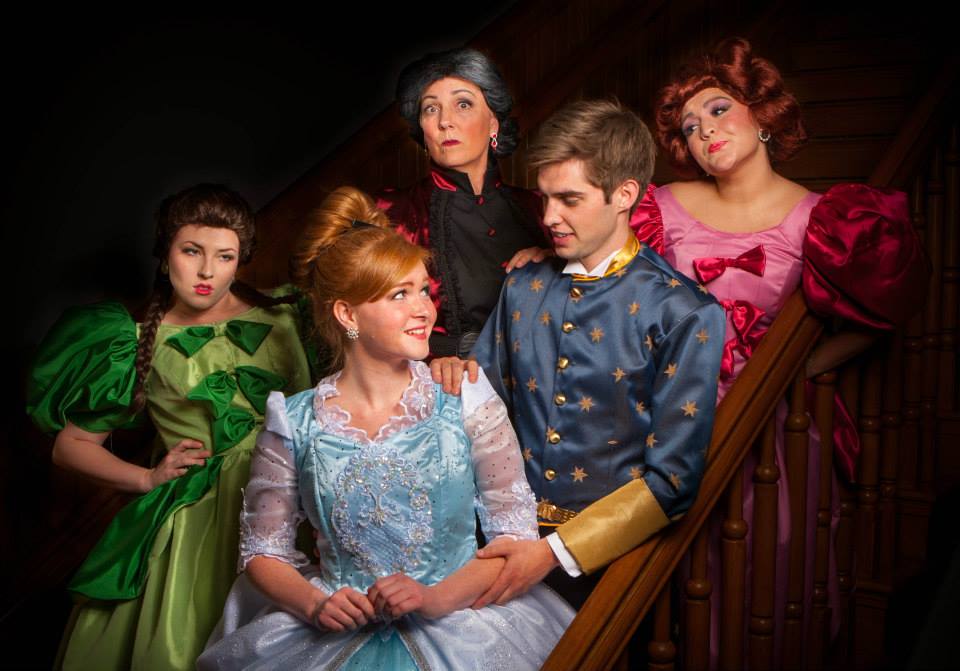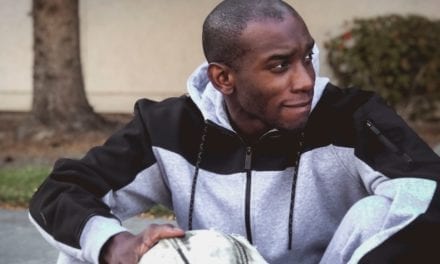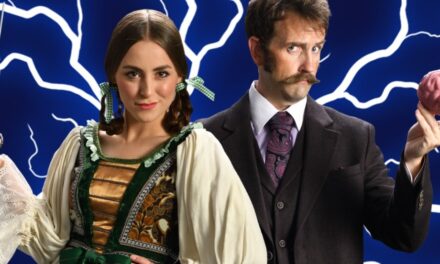OREM — Cinderella’s Fairy Godmother sings, “Impossible things are happening every day,” this message has instilled hope in many a young girl who wished to go to the ball and be swept away by a handsome prince. This dream has made the timeless story of Cinderella a beloved classic.
There have been three versions of Richard Rodgers and Oscar Hammerstein’s adaptation of this fairy tale—the original that debuted as a TV movie in 1957 (and again in 1965) and has since seen a long run among amateur, school and regional theaters throughout the world. In 1997, a new film adaptation (written by Robert L. Freedman) starring Brandy Norwood and Whitney Houston was released, which added new songs to the score from other Rodgers and Hammerstein’s musicals such as “The Sweetest Sounds” (originally from No Strings), which then went on a national tour after Tom Briggs adapted the script for the stage. Following this film release, a new stage adaptation became available for licensing entitled “The Enchanted Version” (which is the version SCERA selected). Finally, last year the newest adaptation debuted on Broadway, making significant changes to the book that greatly strengthened the plot, adding subplots and conflicts to the original. Unfortunately the “Enchanted Version” has by far the weakest book of the three versions, so the SCERA had an uphill battle from the start by selecting this adaptation.
Director Chase Ramsey found creative ways to make this story fresh. However his high concept of incorporating “seekers of love” to begin the show and function in Brechtian style by having members of the ensemble of actors dressed as monks onstage as commentators on the main story and assisting with props and scenery largely did not work. Rather these actors muddied the story and distracted from the main plot. However, I did appreciate the detail Ramsey put into helping his actors create deep characters out of caricatures. There was a level of humanity and depth in both the leads and supporting characters, which strengthened many scenes. This was most apparent in the Stepmother (Kathryn Laycock Little) and Stepsisters Grace (Alana Jeffery) and Joy (McKelle Shaw). Little’s scene where she scolds Cinderella after she and her daughters get caught up in levity during the song “A Lovely Night” was well performed, revealing the psyche of the stepmother and why she was jealousy towards Cinderella and Cinderella’s mother. The “Stepsister’s Lament” was very entertaining and a high point of the production. Watching Jeffrey and Shaw emerge out of the bushes and their exuberant energy full of lively character choices brought the comedy to the appropriate level for the large venue. Other choices made by Ramsey, such as the changing shoe sizes and appropriate use of audience interaction, enhanced the production. In all, Ramsey successful conveyed his theme of “we must never stop seeking” in his direction.
Several other leads gave strong performances. Cinderella (Jaymie Lambson) had a pleasant singing voice and found a nice mix of vulnerability, strength, and humor throughout the different scenes that lead to a successful creation of a multifaceted and relateable character. Her interactions with the Prince at the ball showed her great comedic timing, and her interactions with her stepsisters and stepmother showed compassion and kindness. Lambson showed strength in making the best of her situation in her solo “In My Own Little Corner” and taking charge of her circumstances in “Impossible,” rather than wallowing in self despair or becoming bitter, which helped to further accentuate the theme of the production. Billy Hagee brought plenty of comedy to each of his scenes as Lionel, creating a well-crafted character with choices and a powerful voice that reached the back of the house. His sarcasm and witty remarks enhanced every scene he was in.
The Fairy Godmother (Lauren Wade) had a strong singing voice, but was too cautious in her choices in what could have been a wildly zany and entertaining character. Her lines about “being different” and “wanting to stand out” would have made more since had she had made her character nuttier. Prince Christopher (Parker Harmon) lacked the charisma and rich voice needed in Prince Charming and struggled with intonation and diction in his many ballads. He was most successful in the scenes with Cinderella where the awkwardness of a young man in love got him tongue-tied. This brought a human element to this stock character and enhanced the comedic element of the Prince. However, his subdued performance failed to carry past the first few rows of spectators. There were similar problems with Queen Constantia (Julie Jensen) and King Maximillian (Marc Haddock), who both physically and vocally failed to match their performance to the size of the venue. I wish that Ramsey could have helped these actors amplify their performances, as he was so successful in doing with the stepmother, stepsisters, and Lionel.
The set (designed by Shawn M. Mortensen) was adequate and created levels and variety in staging. However, a large circular apron that was created in front of the set, which had the sole purpose of assisting in the carriage transformation. Unfortunately, it frequently upstaged the main action and created an obstacle course for the actors who utilized this stage area. The transformation itself was another disappointment in this play. The puppets (also under Mortensen’s design) were poorly done and came across as corny, rather than fitting with the other visual designs of the production. The lighting (designed by Michael Gray) generally worked well, though the first act was presented before the sun had set, making the lighting elements virtually unnoticeable until after intermission (a challenge for any outdoor venue though was largely forgiven due to the beautiful summer evening). The sound engineer (Kendall Bowman) was successful in balancing the voices and microphones with the tracks, which made it easy to hear the lines and each actor.
The ensemble was typical of a community theater production, which meant they were often not quite in sync for many of the large dance numbers. Occasional unfocused movement from individual ensemble members would pull focus from the main action giving an unpolished look to some of the large group scenes. A lack of articulation made it difficult to understand many of the words in the choral numbers, though the four part harmonies blended well creating a full sound that energized the ensemble numbers and soared through the large amphitheater.
Though the production struggled for the aforementioned reasons along with a thin and somewhat in cohesive script, to the casual theatergoer and family audiences that the SCERA targets this production succeeded. Running just under two hours, the interactive audience elements in the production, and the “princess for a day” component all make this a great choice to bring young children and the entire family to see. Cinderella will be a nice fit for most families’ summer activities.








